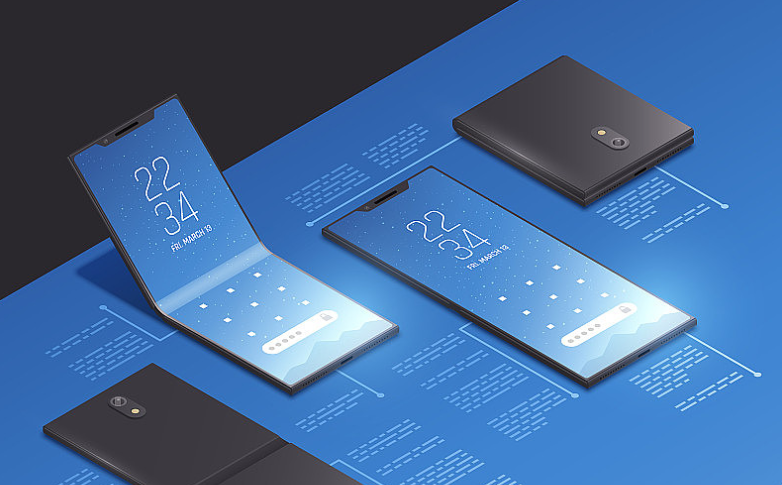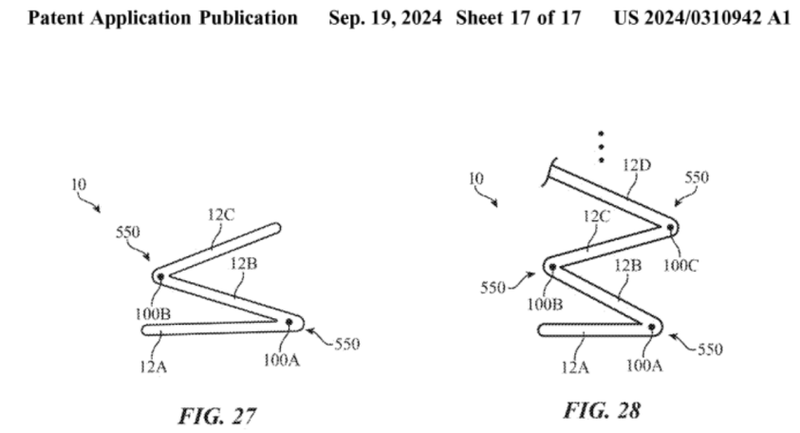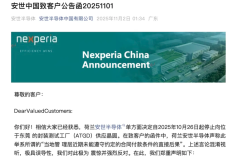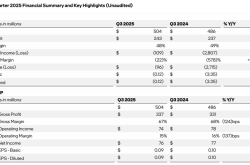Huawei's triple-folding screen hype is still going strong, and Apple is already “rolling out” a quad-folding screen
![]() 10/17 2024
10/17 2024
![]() 433
433

Image source: Visual China
Blue Whale News, October 16 (Reporter Zhai Zhichao) On October 15, media reported that while Apple is actively working on its first foldable iPhone, it has recently applied for a new patent and intends to invest in the development of subsequent triple-fold and even quad-fold screen models. Meanwhile, Zhao Ming, CEO of Honor, also stated in a recent live broadcast that Honor already holds patents for quad-fold screen phones.
Blue Whale News reporters have noticed that foldable screen phones, as a major innovation in the smartphone market in recent years, have gradually gained acceptance among consumers. From the initial dual-fold screens to the current triple-fold screens, foldable screen technology has continued to evolve, offering users a richer experience.
However, even as triple-fold screen phones have yet to achieve widespread adoption, information about quad-fold screens has frequently emerged. This phenomenon has not only sparked discussions about Apple's future product direction but also raised questions about whether smartphones will further evolve into more complex folding screen formats.
Is Apple “rolling out” foldable screens?
In recent years, the foldable screen phone market has shown rapid growth, with major smartphone manufacturers stepping up research and development in this area and launching unique foldable screen products.
According to IDC data, foldable screen phone sales in China grew by 104.6% year-on-year in the second quarter of 2024, continuing a strong growth trend. In contrast, the overall smartphone market grew by only 8.9% during the same period, highlighting the strong market demand for foldable screen phones.
However, despite Samsung's dominant market share in the current foldable screen phone market, Apple is conspicuously absent. According to TrendForce's forecast, Samsung will occupy 50.4% of the foldable screen phone market this year, followed by Huawei (30.8%), Motorola (6.2%), Honor (3.9%), Xiaomi (2.8%), OPPO (2.8%), and vivo (2.8%).
After Huawei launched the world's first triple-fold screen phone, the Mate XT, in September this year, the hype around foldable screen phones was reignited, fueling rumors and anticipation of Apple's upcoming foldable screen devices.
It is reported that Apple's new patent, titled "Electronic Device Having a Display and Touch Sensor Structure," primarily addresses potential display and touch issues encountered in multi-fold screen phones. This patent will effectively address various technical challenges associated with multi-hinge phones.
Simultaneously, Apple has disclosed images of the technology being applied to triple-fold and even quad-fold screen phones. Industry insiders have pointed out that while Apple's patent is still theoretical, its early acquisition of the patent indicates that multi-fold screen iPhones are undoubtedly an area of active development for the company.

Image source: Internet
However, some industry insiders express concern about Apple's pace of development in foldable screens. They believe that given the lack of widespread market acceptance of dual-fold and smaller foldable screens, Apple's dive into quad-fold screen development may be premature. After all, Samsung and Huawei are the world's leading suppliers of foldable phones, while Apple has yet to launch a foldable phone.
Communication expert Xiang Ligang told Blue Whale News that Apple's recent announcement was merely a foldable screen patent, not a product, prototype, or concept phone, and that there is still a long way to go before it becomes a reality.
The Evolution of Foldable Screen Formats
Looking back at the history of foldable screen phones, they have gradually evolved from scratch. From the initial dual-fold design to the current triple-fold screens, the technology has undergone years of development. When Apple suddenly announced its quad-fold screen patent and related news, some users on Weibo discussed topics such as "whether such rapid evolution is too fast" and "whether the more folds a screen has, the better it is."
In response, Song Ziwei, former iQOO product manager, said that the triple-fold format has yet to gain traction in the market and is not yet mature. Hinges, bearings, lightweight design, heat dissipation, and other challenges need to be overcome. It's not necessarily true that more folds are better; the key is to address users' needs. Is it simply a large, portable Pad?

Image source: Weibo
Song Ziwei also pointed out that the technology behind the triple-fold format is still not mature, and there are many challenges in its marketization, such as the durability of hinges and bearings, the need for lightweight design, and heat dissipation issues. She emphasized that simply stacking more folds does not equal success. Apple needs to focus more on users' actual needs to truly win the market with its new products.
Zhao Ming, CEO of Honor, and Zhou Hongyi, founder of 360, also stated in a recent live broadcast that while they have no shortage of foldable screen technology, the key lies in meeting users' needs and enhancing their experience.
However, from a technical perspective, foldable screen phones also present many challenges. For example, users of Samsung Fold 4 have reported serious issues with the adaptation of many domestic apps to foldable screens. The inner screen simply enlarges content when opened, and split-screen operations force components into full-screen length, leading to a suboptimal user experience.
From a user experience perspective, while foldable screen phones combine the functionality of both phones and tablets, market feedback has been mixed. For instance, the MIX FOLD 4 has gained recognition for its lightweight portability and powerful performance but is considered expensive with significant price fluctuations.
It is worth noting that before Apple announced its new patent covering quad-fold screen phone technology, Chinese companies had already filed patents for quad-fold screen phones, but their patents are currently in a state of unpaid annual fees.
In this regard, a professional told reporters that if the annual fee is not paid on time, a late fee will accrue within a certain period. If the fee remains unpaid beyond the deadline, the patent rights will terminate, and the patented technology will become public domain and freely usable. This would not only waste the patent owner's initial research and development investment and application fees, depriving them of the opportunity to generate economic benefits through the patent, but could also expose them to legal risks due to the mislabeling of expired patents.







